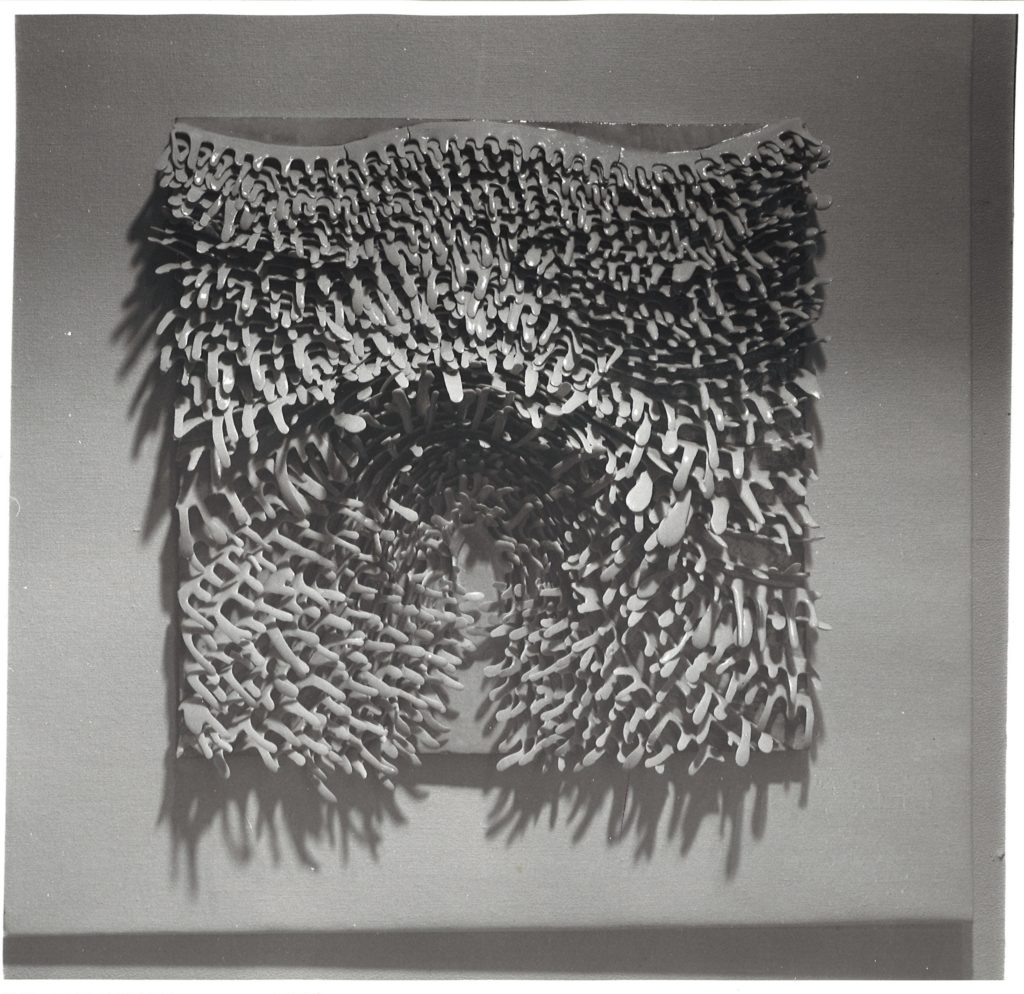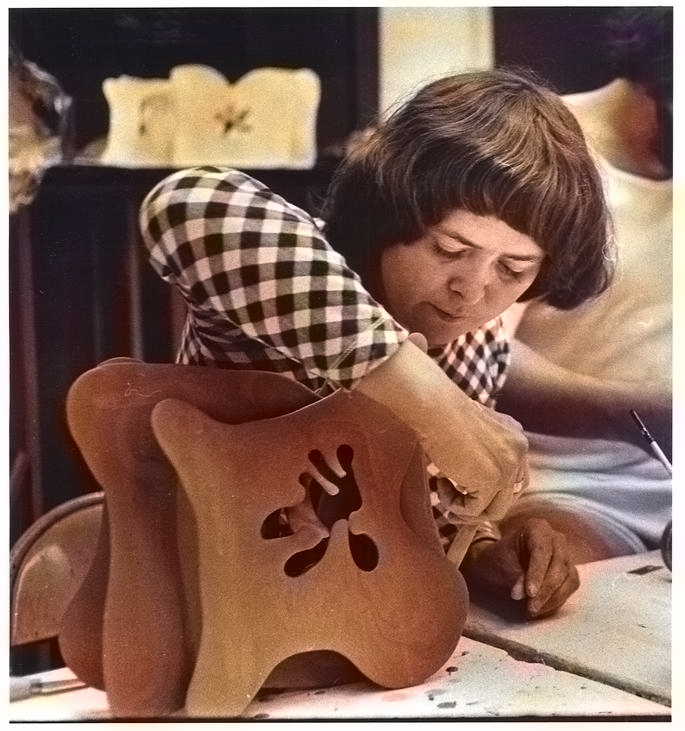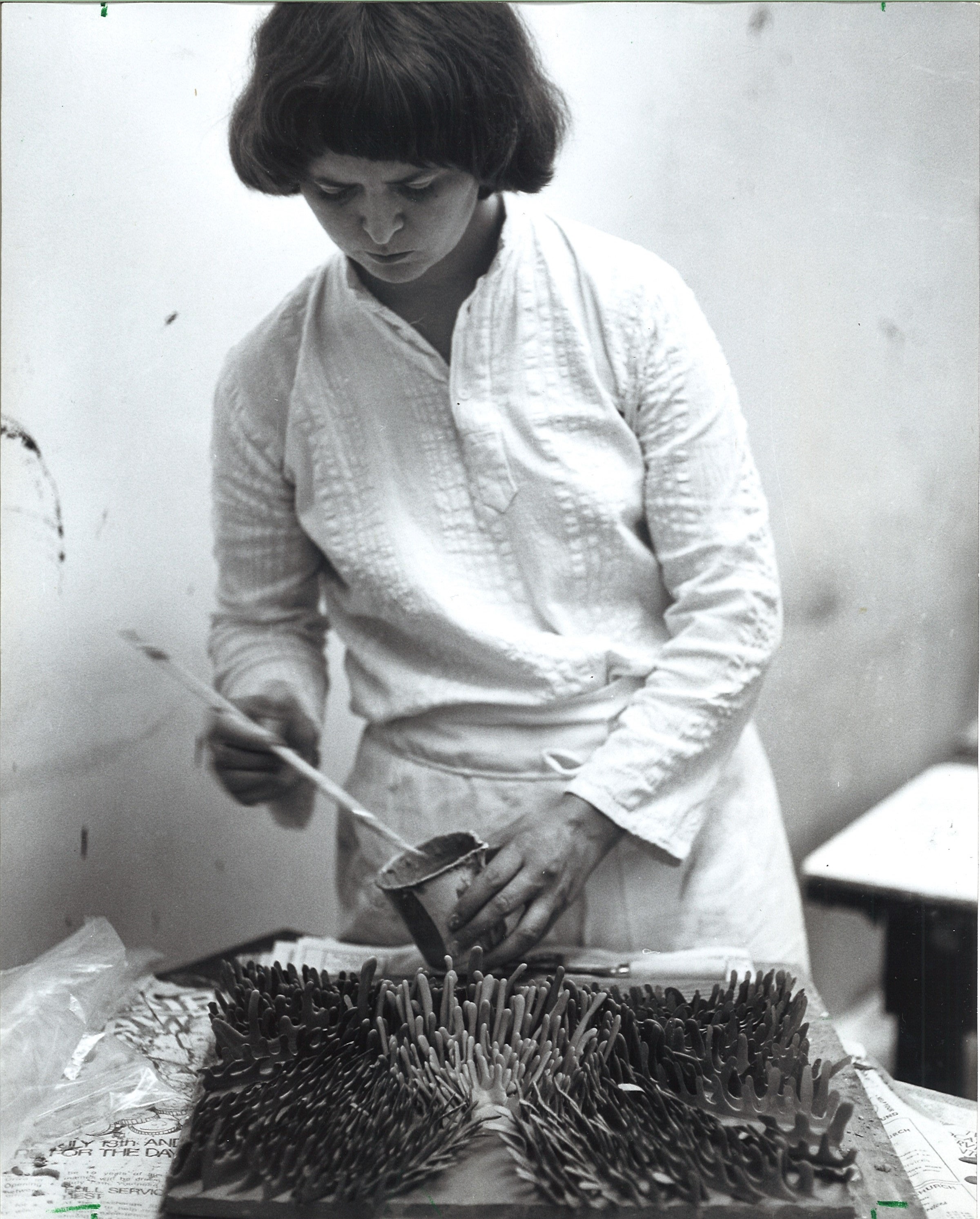Gerda (Spurey) Gruber

(b. 1940) born in Bratislava, Slovakia, lives and works in Yucatán, Mexico
Untitled, 1971
clay
Gerda Gruber studied ceramics at the College of Applied Arts in Vienna from 1957 to 1962, and right after graduating she married fellow Austrian ceramicist Kurt Spurey. Together they founded a studio with college friends Iris Brandel and Elisabeth Schaffner, which ran until Gerda and Kurt established their own studio that focused on porcelain designs, which was active from 1969 to 1975.
In the spring of 1971, under the auspices of the International Academy of Ceramics, the Tennessee Arts Commission pledged its support for the promotion and establishment of the U.S. International Ceramic Symposiums. The Symposium’s mission to help develop a worldwide network of support for ceramic art was achieved by bringing together top ceramic artists from around the world for a month-long sharing of ideas and creation of innovative ceramics.


Left: “Gerda Spurey (Austria) assembles sculptural forms form poured porcelain slip. The liquid porcelain is deflocculated, and related shapes are poured on plaster bats as the artist carefully controls the poured form. Determining the proper time for removal of the wafer-thin slab is important for successful separation between bat and clay. The finished, glazed form combines the organic qualities of hand building with the static fluidity of cast ware.” (Ceramics Monthly) Right: Image appears in 1973 ICS catalogue
Gerda and Kurt Spurey represented Austria at the First U.S. International Ceramic Symposium, which consisted of twenty-five artists from thirteen different countries, and was hosted in the summer of 1973 at the Memphis Academy of Art. While participating in the Symposium, the Spureys worked together, producing elegant organic works in porcelain that were assembled out of multiple thin poured porcelain slabs. They created numerous free-standing sculptures as well as two wall reliefs, all of which were fired with a colorless glaze to draw attention to the curves of the form.
Following the Symposium, Gerda and Kurt divorced in the fall of 1975, and Gerda assumed her maiden name Gruber. She taught for a year at the Banff Center for Fine Arts in Alberta, Canada, and then settled down in Mexico City, Mexico, where she taught and was influential in establishing the National School of Plastic Arts at UNAM (the National Autonomous University of Mexico). Gruber taught at UNAM from 1976-1986, and in 1988 she moved to the more rural town of Mérida, Yucatan, where she continues to teach ceramics.
Throughout her career Gruber has continued to push herself and develop her art. In 1985 she returned to Tennessee to attend the 1985 International Ceramic Symposium that was held at the Appalachian Center for Crafts in Smithville, Tennessee, this time representing Mexico. She described her experience at this symposium as “a catalyst for personal development,” saying, “no matter how interesting the clay objects created during the Symposium, even more valuable are the impressions each participant takes home. From cultural differences and intellectual interactions emerges a new personal vision.”[1] In the nineties she expanded her artistic mediums, and began working with glass, bronze, silver, wood, and natural fibers. In 2001, Gruber and Mari Carmen Castañer co-founded the Gruber Jez Foundation, a non-profit located in an old police station, which supports contemporary ceramic art through educational and artistic residency programs.
Gruber’s work has been exhibited in numerous solo and group exhibitions internationally. She was awarded a medal in recognition of her ceramic art teaching by the First National Biennial of Art in Ceramics in 1996. Her work is in the collections of the Museum of Modern Art in Mexico City, Mexico; the Museum of the City of Mérida in Mérida, Mexico; the Victoria and Albert Museum in London, England; the International Olympic Ceramic Sculpture Museum in Athens, Greece; the Ariana Muesum in Geneva, Switzerland; the International Museum of Ceramics in Faenza, Italy; the Danish Museum of Art and Design in Copenhagen, Denmark.
Commenting on the many years she and her husband, Kurt, have used porcelain for their sculptural pieces, “The material of porcelain is translucent and we used this effect. We never use color, or at least very seldom. For sculpture it is very good to make the things monochrome.” – 1973 International Ceramic Symposium catalogue
[1] Merritt, Alice C. International Ceramic Symposium. Ceramics Monthly. February 1986. Page 42.
Written by Aiden Layer, TN Arts Intern

